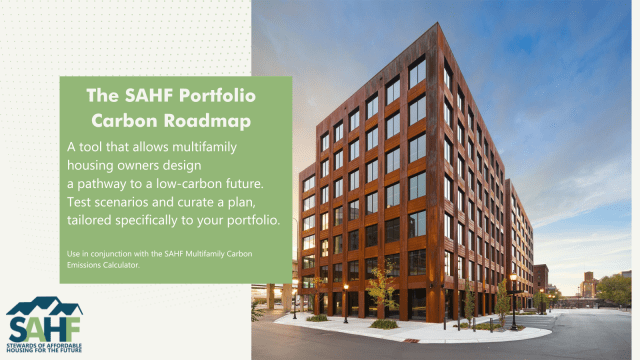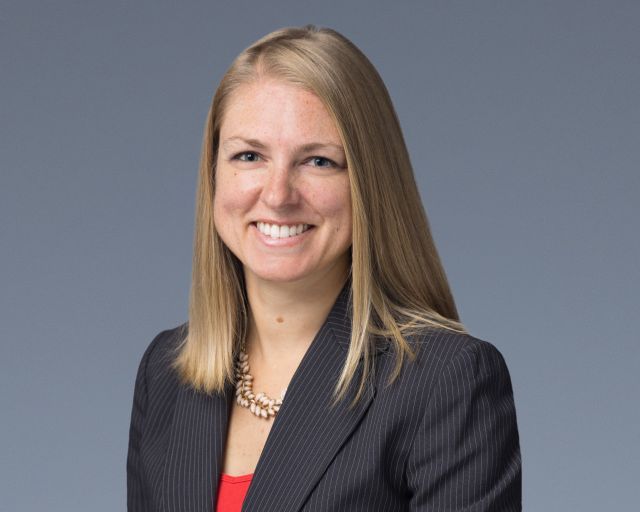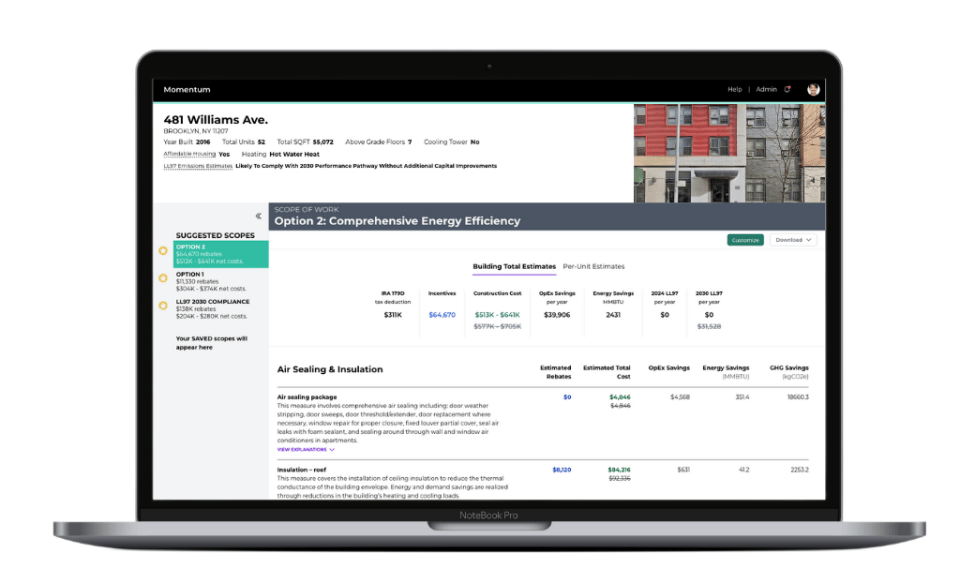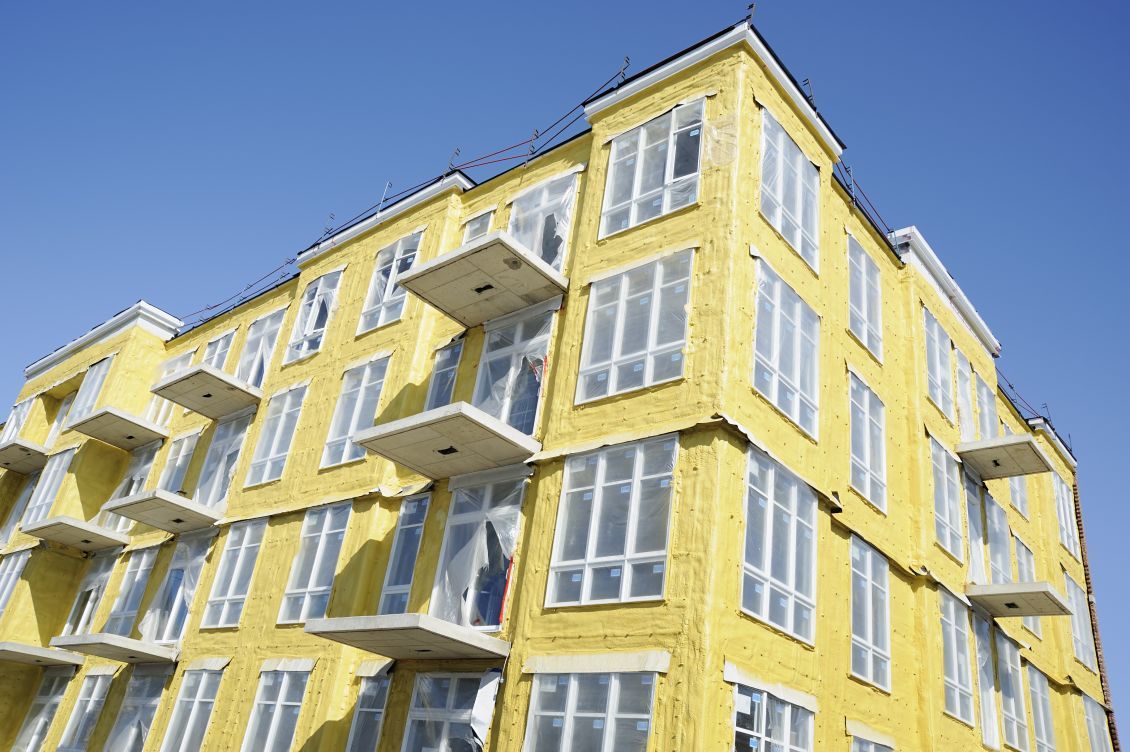The affordable housing sector is keen to become more climate resilient, but many in the field say they lack the technical resources to make the necessary changes to their properties. That’s where the Carbon Roadmap comes in. This free tool lets multifamily portfolio owners test and plan different decarbonization strategies.
The Multifamily Portfolio Carbon Emissions Roadmap Tool, developed by Stewards of Affordable Housing for the Future (SAHF), is among a growing number of resources that aim to help the housing sector realize the benefits of the Inflation Reduction Act (IRA). The historic $369 billion legislation provides critical investments in climate resilience, energy security, and efficiency.
“Most folks in the affordable housing sector have a solid moral compass and get the urgency around addressing climate change, and implementing mitigation and adaptation strategies,” said Lauren Westmoreland, vice president of energy and sustainability at SAHF. “But if you don’t have the confidence, it’s hard to move forward. We are giving people the confidence and the understanding they need to do this work.”

Created with funding from the Wells Fargo Foundation, the Carbon Roadmap also has potential to be an effective policy and program tool for local, state, and federal agencies, says Westmoreland. For example, if a city is exploring new building standards, officials could run an analysis on how much decarbonization work the affordable multifamily sector would need to do to meet a proposed target.
And for programs administering decarbonization rebates or grants to building owners, the Carbon Roadmap could allow agencies to gauge the impact absent complex and costly energy modeling. While some jurisdictions can pay consultants for this work, the roadmap can be particularly helpful for smaller, under-resourced cities and public housing authorities, she said.
Unlocking the IRA's Potential
Multifamily housing accounts for 20 percent of greenhouse gases in the United States, so retrofitting and electrifying buildings is vital to reaching net-zero emissions and providing energy security for millions of people. While the IRA offers unprecedented opportunities for the sector, there is no shortage of challenges. Housing owners must figure out which subsidies and tax incentives they are eligible for, what retrofits have the biggest impact, which properties to prioritize when, and how to meet various property, programmatic, and financing requirements.
“People are excited and hopeful about the potential to access funding that’s never been available before. But they’re overwhelmed and unsure how to prioritize and decide whether to go for resources now or wait,” said Enterprise Community Partners Vice President of Building Resilient Futures Krista Egger in an interview this summer. “Affordable housing organizations have not had additional staff capacity to help them navigate this, so that’s been challenging.”

SAHF’s free two-part tool includes a calculator that determines emissions, while the roadmap allows owners to plan different scenarios so they can decide what to do in their portfolio to meet carbonization goals. If a portfolio owner lacks some information, they can enter what they know, such as the building addresses, number of units, and whether they use fossil fuels. The Carbon Roadmap will offer emission estimates based on available data sets. Similarly, while tenant-level utility data is often unavailable, the tool can estimate how much residents pay for utilities. That helps owners decide which buildings to prioritize for what type of work.
With support from the Carbon Roadmap, “both portfolio owners as well as local jurisdictions can get a better sense of what’s going on with affordable housing without doing very heavy and costly data work,” Westmoreland said. “I want people to use our tools to figure out what they need to do so the IRA can fund those projects and opportunities.”
Help with Your Decarbonization Game Plan
Another tool that helps capture the opportunities available through the IRA is Momentum, a building decarbonization planning platform built by Cadence OneFive. The subscription-based operating system helps multifamily building owners meet climate challenges through standardization, automation, and integration. It allows everyone involved in a project to understand their options from preliminary planning to construction completion.
Currently available in New York State, Cadence hopes to expand in the future. For property owners, the platform costs about $12 per apartment per year, while lenders and service providers pay an annual fee.
“The way we sequence work in planning and executing retrofits doesn’t line up with the way business decisions are made,” said Cadence OneFive Co-founder and CEO Bomee Jung. People often invest in one scenario without having the opportunity to compare multiple scenarios.

“The reality is that with any building, there is no one right answer – there are many answers depending on your goal,” she said. “Our tool reduces the cost of doing that kind of scenario analysis to essentially nothing because you can run as many construction scenarios as you like with different goals attached to them.”
Retrofitting can be complicated and information about how to do it efficiently is not readily available, Jung said, adding that it is not realistic to send someone to a conference and expect them to apply that knowledge across building projects. Cadence OneFive provides technical support on its platform and ensures property owners, funders, and contractors stay on the same page.

In the scoping phase, for example, Momentum generates information on what retrofit measures can lead to which outcomes in terms of energy savings and costs, she said. It also tracks milestones as projects progress.
“You have so many different parties looking at a deal with their own purposes,” Jung said. “When a project gets into a stage where different people need to be notified – for example, site verification – folks are notified. [Momentum] keeps the project moving and everyone’s eyeballs aligned with getting that project to completion, which can save time and money.”
Building Faster and Greener
Construction management may not be as tangible or photogenic as something like solar panel installation, but that does not make it any less important. Streamlining these processes to be more efficient and effective significantly speeds up urgently needed retrofitting projects and lowers greenhouse gas emissions, Jung said.
Eventually, Momentum could also improve market transparency. Bids for retrofitting measures vary by as much as 40% and negotiations usually take place bilaterally and in the dark. Momentum could provide benchmark pricing by, for example, showing the cost per square foot of retrofit measures (including labor and materials) based on the last six months of bidding. This price signal can reduce variance and make projects more effective and less risky – critical in the budget-tight affordable multifamily housing sector, Jung said.
As more information becomes available under the IRA, Momentum will be updated to show available local, state, and federal subsidies. Jung said she hopes that down the line, it can help property owners make the best decisions for their residents’ health and quality of life. For example, in an area with poor outdoor air quality, the owner could focus on keeping outside air out by investing in strategies such as envelope tightening and high-quality ventilation.
“Housing is a major determinant of health,” Jung said, “and we want to deliver information about how your decisions will affect your residents’ health outcomes at the time you need to make key decisions.”
Many other tools are also available—and more will likely emerge as the IRA rolls out. For example, the Building Energy Exchange (BE-Ex)’s Multifamily Low Carbon Retrofit Playbooks summarize retrofit strategies to help maximize residents’ comfort and improve energy efficiency when transitioning to electricity. Baker Tilly’s Energy Community Mapping Tool helps determine if a project’s location may qualify for the IRA’s Energy Community Tax Credit bonus.
Westmoreland said she is excited to see if the IRA spurs more innovation, which could ultimately make the planet and people healthier.
“Everyone deserves a high-quality place to live,” she said, noting that emerging tools to make affordable housing more efficient, cost-effective, and climate resilient are key to ensuring residents have the confidence and peace of mind to create and lead the life they choose.
Vesna Jaksic Lowe has written for the New York Times, the Washington Post, and the New York Daily News. This is the first in a series of blogs exploring how the affordable housing sector can maximize the potential of the IRA.
